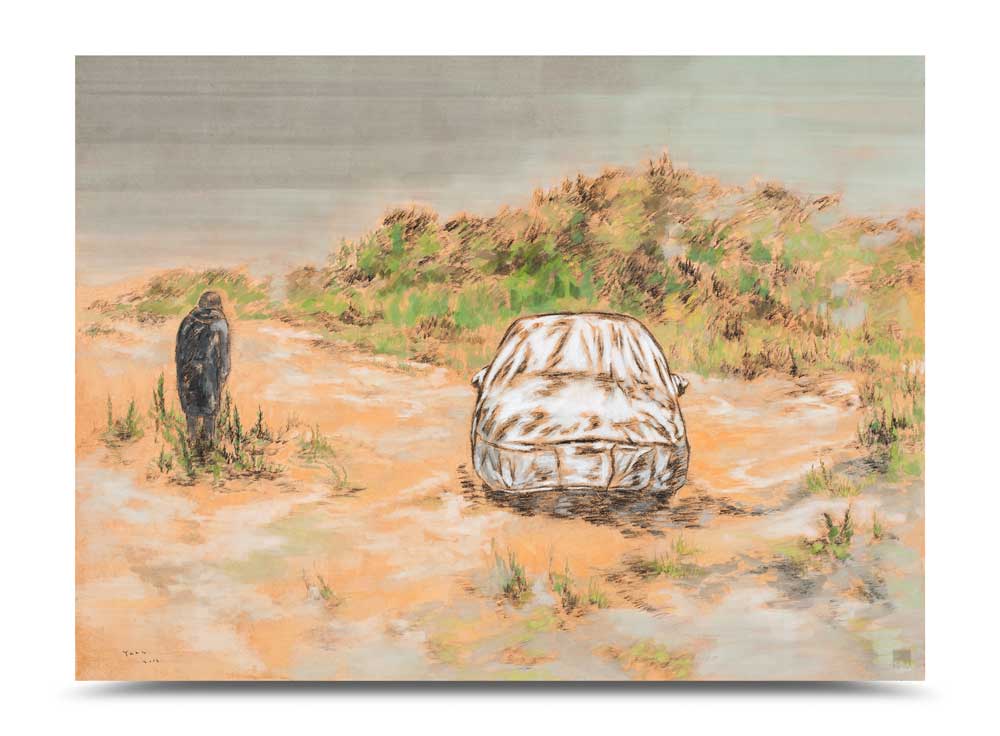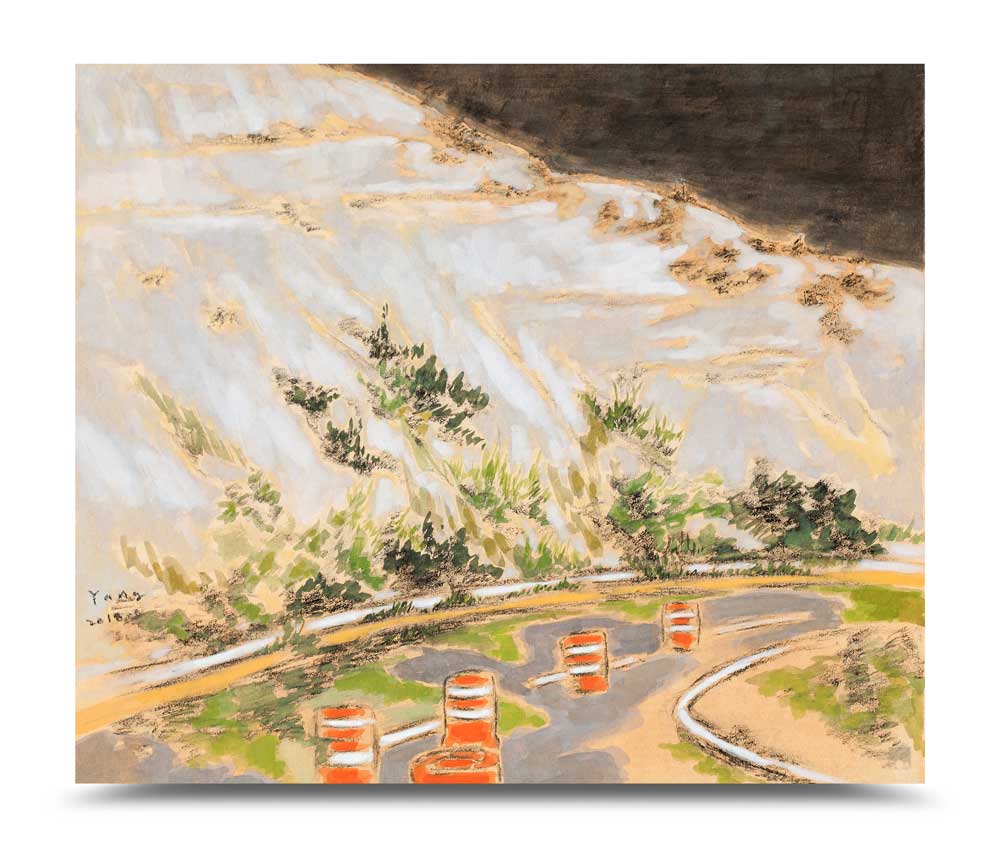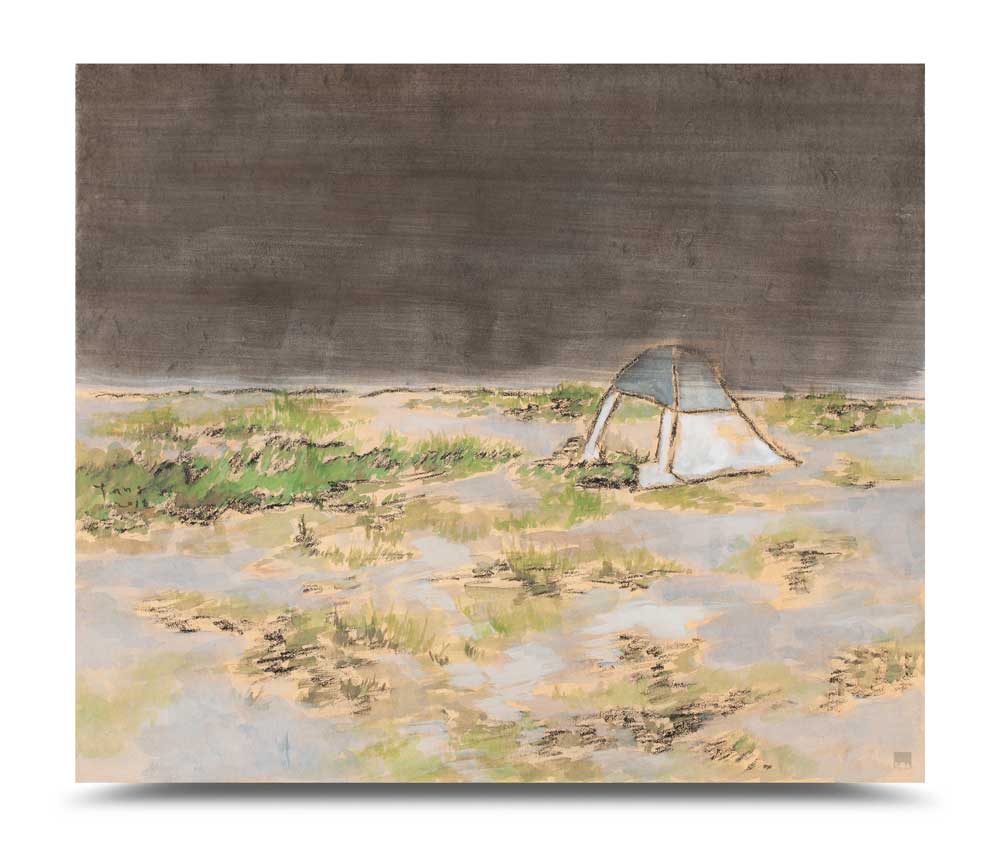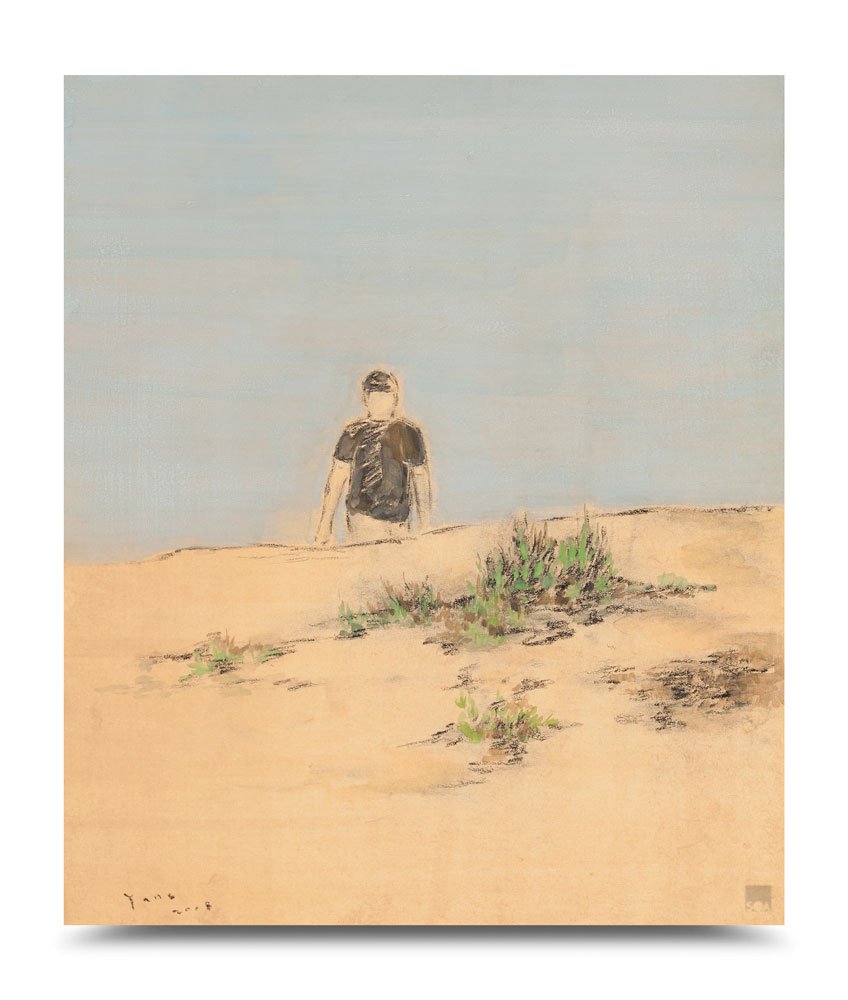The Interstices of Landscapes – Gorgeous Landscapes
If we consider the tragedy Narcissus underwent derived from his “seeing” his reflection, the matter of “seeing” connotes more than the meaning of sight. Narcissus who fell in love with an insubstantial image, his own reflection, in the water and did not realize it was merely an image or a shadow …, I who fall in love with desolate, dreary inconsequential scenes … I seem not involved in Narcissus but we are associated with each other by an act of “seeing.”
Can we bring one’s self that is partial to gorgeous, showy things together with one’s self that is partial to desolate, dreary scenes? If not, can we see them as something ambivalent? What I can guess at this point is an overlap of the identity’s thinking and the other’s thinking within me. Whatever it is, (Whatever the other’s thinking is) it remains as some strain that disturbs me like Roland Barthes’ punctum.
What I mainly depict are insignificant scenes that look like pieces from my everyday life. Such scenes that are common and everywhere appear familiar and simultaneously unfamiliar so they have an anxious and weird quality. I look at some scene and at the same time I am unmasked by such scenes. What makes me face such scenes and be seen by such scenes? This is like a matter to solve (or impossible to solve), engendering another interstice within me.
Since around 2005 I have worked on the theme of “gorgeous landscapes.” My gorgeous scenes denote desires for objects and spaces that are commonly found in our surroundings but draw no attention. The word “gorgeous” likely having a Latin origin contains “gurges” which means “gracious,” “flashy,” “dazzling,” “extremely beautiful,” and “really attractive.” This term is used to refer to something elegant and engaging. Inconsequent scenes, my trademark subject matter, appear very attractive and enthusiastic to me. In the moment when things I have seen everyday are perceived differently all of a sudden (I’d like to call this an unexpected moment), all my senses are absorbed in such objects. I tap into spaces in my surroundings, traces of humans, and drawing factors in order to represent such special experiences and senses in my paintings.
They are not landscapes from beautiful nature, figures, or art in refined form associated with high technology but are desolate scenes. Such ungainly scenes hard to portray in painting bring about some sense of loss and dreariness. These scenes settle in my heart and result in the images in an abstruse mixture of consciousness and unconsciousness while arousing inexplicable feelings of tension, anxiety, and unrest in the visible world. Other worlds that make frequent appearances are unordinary scenes that are disguised as ordinary quotidian aspects and also “inexistent scenes” that are likely to be existent but are actually inexistent. The scenes staged with dramatic relations among landscapes, things, and figures arouse tension and curiosity through “something that is more than visible.” That is, they can be interpreted differently depending on the audience’s point of view.
Station B
Station B refers to scenes such as the interstices of landscapes, flashy scenes, desolate scenes, scenes of desires, attractive scenes, unknown scenes, inexplicable scenes, and so on into which I impart meaning as well as a space I am captured by them or its placeness. However, such placeness is not limited by my multiple emotional states that change by the minute. Station B, a signified space of my own appears very fluid, sensuous, and whimsical.
My Station B crossing any physical, visual meaning refers to “a closed, old, useless and abandoned space.” Station B was perhaps a productive, gorgeous space but now it faces me in this way. Station B is probably touching something in my abyss I tried to conceal, overlook, or throw away or that has already been abandoned. Station B keeps pricking my body as a punctum.
YANG, HYESOOK
October 2017






